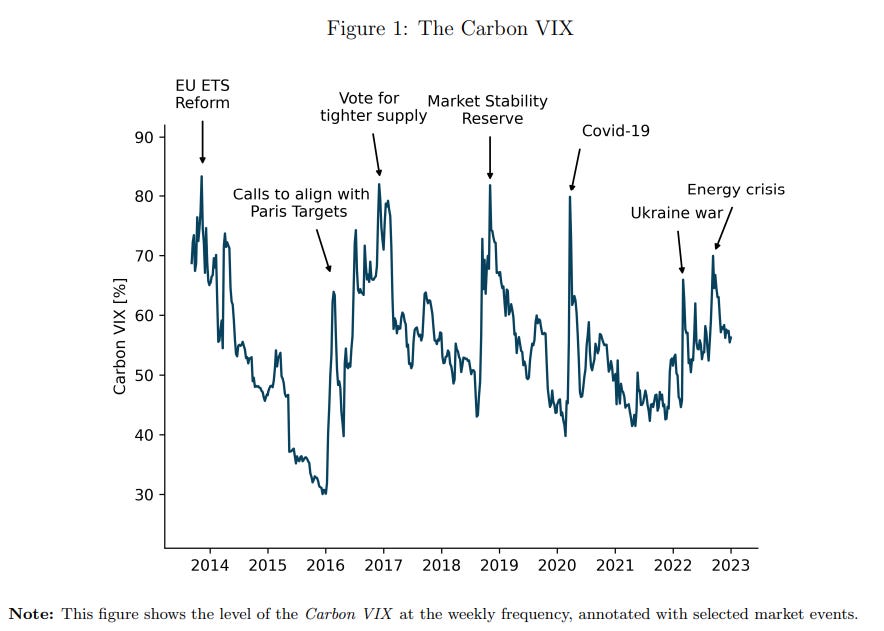Welcome to Carbon Risk — helping investors navigate 'The Currency of Decarbonisation'! 🏭
If you haven’t already subscribed please click on the link below, or try a 7-day free trial giving you full access. By subscribing you’ll join more than 4,000 people who already read Carbon Risk. Check out what other subscribers are saying.
You can also follow on LinkedIn and Bluesky. The Carbon Risk referral program means you get rewarded for sharing the articles. Once you’ve read this article be sure to check out the table of contents [Start here].
Thanks for reading Carbon Risk and sharing my work! 🔥
Estimated reading time ~ 8 mins

More commonly known as the VIX, the Chicago Board Options Exchange (CBOE) Volatility Index is a measure of expected volatility in the S&P 500 index. The ‘Fear Index’ moniker only really emerges when the stock-market convulses, traders screens turn a deep shade of red, and the media need a way to make it sound more dramatic.
Now, analysts at Copenhagen Business School and NYU Stern have sought to copy the VIX and create an index which measures uncertainty in the EU carbon market. The Carbon Volatility Index (VIX) builds a “portfolio of options” whose final payoff “approximate the realized variance of EUA futures until option expiry.”
In short, an increase in the price of this portfolio of options reflects higher expected EUA price volatility. The Carbon VIX measures the expected carbon price return volatility over the next 120 days, capturing uncertainty about any information that could impact the EU carbon price within that time frame.1
The Carbon VIX exhibited an average annualised expected volatility of 54% between September 2013 and December 2022. It also varies significantly over time, ranging between 30% and 83% over the same period, with a weekly standard deviation of around 10 percentage points. Climate policy announcements (e.g., the Market Stability Reserve), and macroeconomic events (e.g., the pandemic) typically coincide with a spike in the Carbon VIX.
Heightened carbon price uncertainty also tends to take a long time to resolve. For example, the spike in the Carbon VIX in 2018 took almost two years to settle down. The Carbon VIX also has a very low correlation with other measures of financial uncertainty such as the EU equity VIX (correlation of 0.11), or the oil VIX (0.14). While the latter two tend to fade quickly after a spike, carbon price uncertainty persists. This could indicate that shocks to the Carbon VIX are more likely to have real world consequences.
Nothing to fear but fear itself
Lets turn to those potential knock-on effects now. Could carbon price volatility have an impact on companies incentive to invest in decarbonisation? The first port of call for the Copenhagen Business School and NYU Stern analysts was to see whether there was impact on annual investment patterns.


